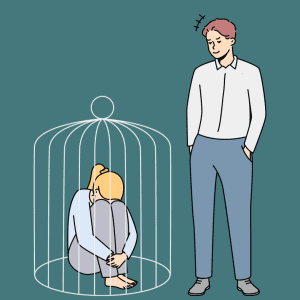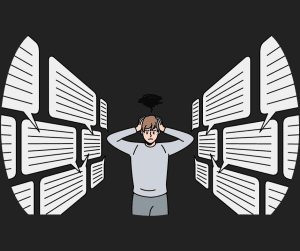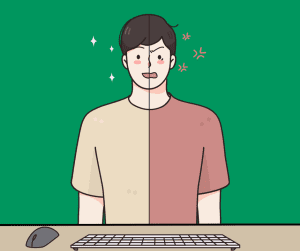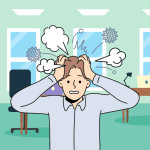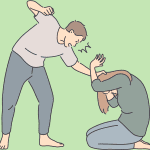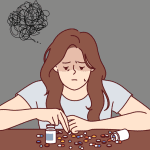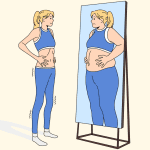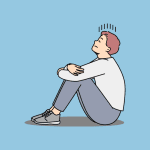“Eating disorders are serious mental illness not lifestyle choices” – Demi Lovato
In this article, eating disorders will be discussed. A definition of what an eating disorder will be introduced, followed by the different types of existing eating disorders and what are their risk factors and symptoms. Finally, services that are offered in Malta which help people with eating disorders, will be discussed.
What is an eating disorder?

Eating disorders are a result of an abnormal eating pattern and an increased amount of exercising. These actions impact one’s body negatively and if these actions keep on going for a long time, then one’s health can become compromised.
An eating disorder may begin because the person might not be happy in their own body. It’s difficult sometimes to love oneself, when you look at the mirror and are not happy with what you see in the reflection or when looking at the weighing scales and a feeling of anger is experienced when seeing how much you weigh. Influential sources such as what we perceive on TV, Movies, Magazines and now most particularly, Social Media, may influence us on what the ideal body shape should be. Therefore, not seeing ourselves like what we see on our screens or what is idealised in society, can have negative effects on ourselves.
This could lead us to start treating our bodies differently or lead us into eating extremely small amounts or having a strict diet and having control of what we eat. This can lead us to not have a healthy relationship with food and regarding food as an enemy. Besides all this, the person can start to exercise in large amounts. Yes, physical activity is important, but it’s not beneficial to ourselves to over do it or exercise with a malnourished body.
What are the different types of eating disorders that exist?
Anorexia Nervosa – This is when people set goals for themselves to lose weight as they are unhappy with their body shape and/or weight. In turn, they end up losing so much weight that they become severely underweight for their age and height and ultimately become unwell. Some others with anorexia nervosa are focused on what they eat and how much calories they intake in their body, this may lead to them becoming very strict with their diet. Excessive exercise can also be seen in people with anorexia nervosa.
Bulimia Nervosa and Binge Eating Disorder – Both these disorders include people participating in regular binge-eating. Usually, people being faced with these disorders are distressed by their weight and body shape.
In Bulimia Nervosa, people find themselves to binge eat but then use extreme ways to try and find control over their weight such as purging. Purging is when people intentionally vomit or use laxatives or diuretics to lose weight. Excessive exercising is also seen with this type of disorder. Binge eating disorder can be seen differently from bulimia nervosa as such behaviour would not be seen regularly. Their weight would either be in the normal range, overweight or obese.
However, binge eating and purging can be symptoms which may be found both in people with bulimia nervosa and also anorexia nervosa. The difference being that people with bulimia nervosa would not be severely underweight as can be seen in people with anorexia nervosa. Although considering this factor, it might make it more difficult for family and friends to realise that their loved one is suffering from an eating disorder as bulimia nervosa might be easier for the person to hide it from everyone.
What might the causes be that may lead to an eating disorder?
You do not just wake up one morning and decide to stop eating. However, research shows how several factors may contribute to such a disorder. These factors range from – biological, genetic, psychological, social or cultural.
Biological factors are looking at the ways your brain works, genetic factors are determined by your family and psychological factors looks at the way you think. Social factors are determined through your relationships with others and cultural factors depend on the customs and values of the people around you.
Other risk factors of developing an eating disorder may be the following –
- Low self-esteem or feelings of worthlessness
- Being influenced by what an ideal body should look like by what is depicted by society.
- Experiencing depression or loneliness
- Experiencing a stressful life change example – going through a breakup or physical bodily changes of puberty
- Taking part in activities where body image is a concern example – gymnastics, dancing etc…
- Being someone who has followed a strict diet in the past or deals with body dissatisfaction
- Perfectionism and/or impulsive behaviour or having difficulty managing emotions
- Feeling as though you are not good enough
A number of symptoms can lead to a diagnosis of an eating disorder and here are a few examples – being afraid to put on weight, weighing yourself constantly, feeling anxious around meal times, over-eating uncontrollably, making yourself vomit after eating or taking laxatives to lose weight, lying about what you eat, exercising too much and many more.
Who can help?
Recovery is possible! Treatment and psychological interventions exist to help treat and support people who have an eating disorder. Research shows that people with eating disorders do get through it with time and build their way forward to move on with their life. Services in Malta such as ‘Dar Kenn Għal Saħħtek’ which is a residential and semi residential facility that provides treatment for people with eating disorders. It is important to reach out to someone if you are being faced with an eating disorder. However, if you feel that you are finding it difficult to talk to someone, kellimni.com is always there 24/7 and where professionally trained operators will be ready to listen!
“Recovery is not a straight line. Be gentle with yourself.” — Cait N.

